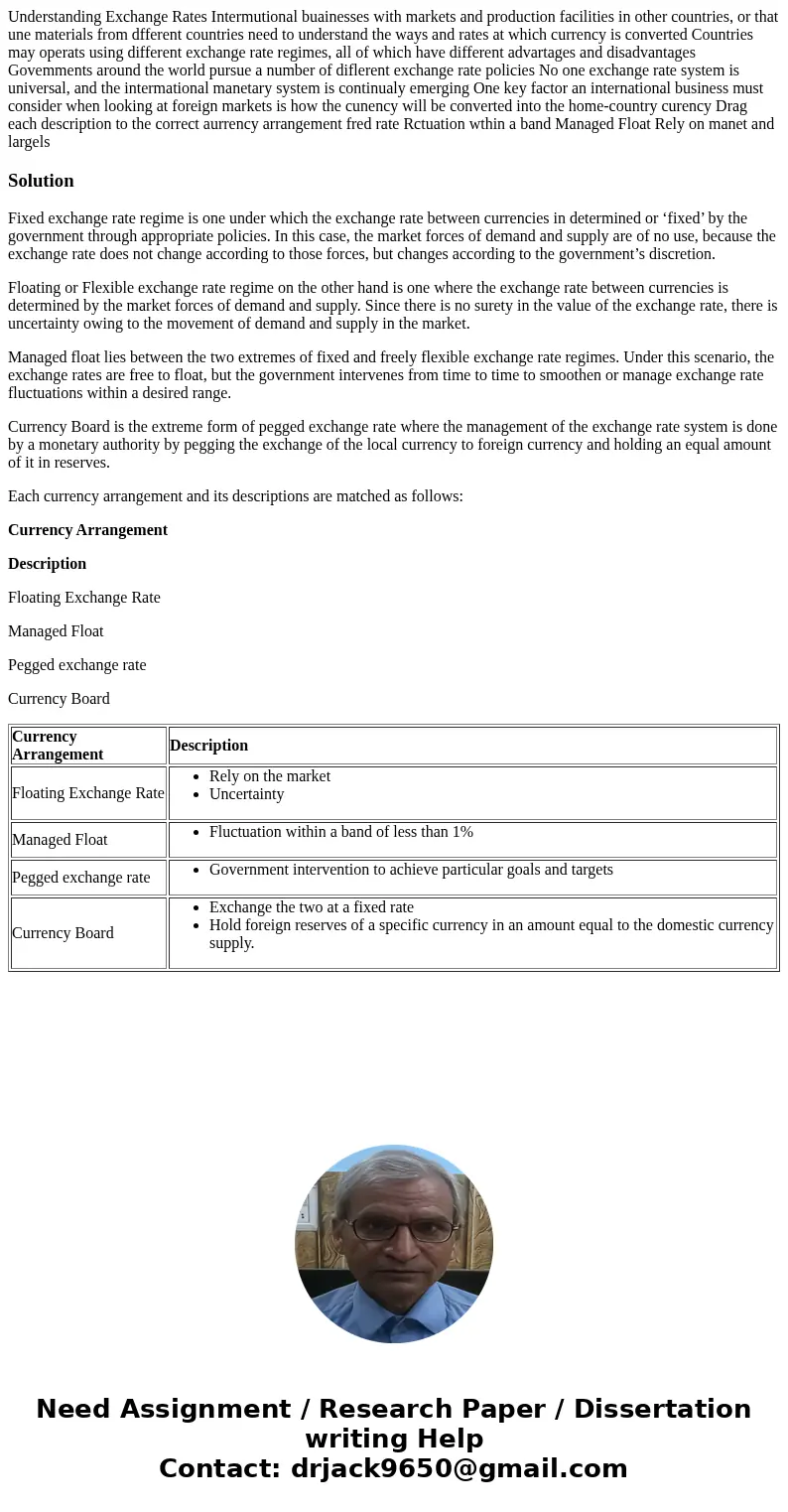Understanding Exchange Rates Intermutional buainesses with m
Solution
Fixed exchange rate regime is one under which the exchange rate between currencies in determined or ‘fixed’ by the government through appropriate policies. In this case, the market forces of demand and supply are of no use, because the exchange rate does not change according to those forces, but changes according to the government’s discretion.
Floating or Flexible exchange rate regime on the other hand is one where the exchange rate between currencies is determined by the market forces of demand and supply. Since there is no surety in the value of the exchange rate, there is uncertainty owing to the movement of demand and supply in the market.
Managed float lies between the two extremes of fixed and freely flexible exchange rate regimes. Under this scenario, the exchange rates are free to float, but the government intervenes from time to time to smoothen or manage exchange rate fluctuations within a desired range.
Currency Board is the extreme form of pegged exchange rate where the management of the exchange rate system is done by a monetary authority by pegging the exchange of the local currency to foreign currency and holding an equal amount of it in reserves.
Each currency arrangement and its descriptions are matched as follows:
Currency Arrangement
Description
Floating Exchange Rate
Managed Float
Pegged exchange rate
Currency Board
| Currency Arrangement | Description |
| Floating Exchange Rate |
|
| Managed Float |
|
| Pegged exchange rate |
|
| Currency Board |
|

 Homework Sourse
Homework Sourse